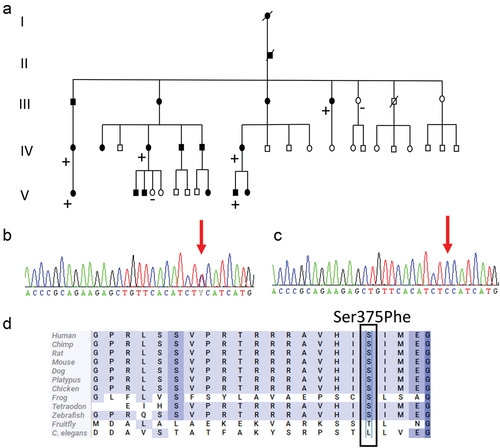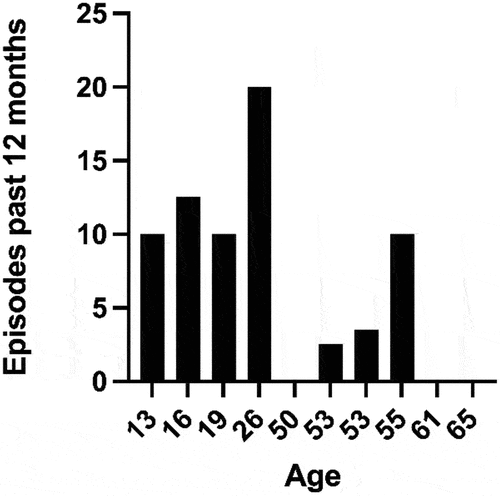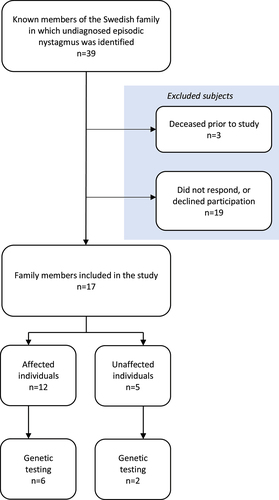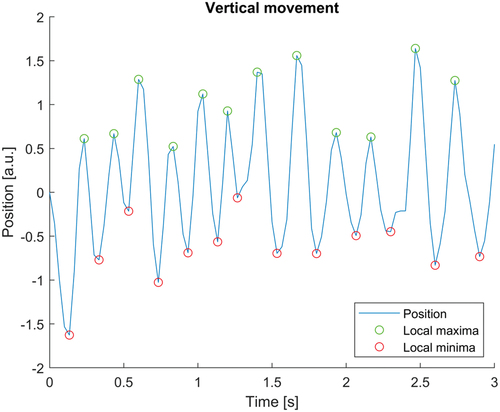Figures & data
Table 1. Characteristics of the 12 affected participants. Data obtained from questionnaires and medical records.
Figure 2. (a) Pedigree of the family with a Ser375Phe (c.1124C>T) variant in the FRMD5 gene. Plus and minus indicate individuals with and without the variant, respectively. Squares: male; circles: female; slash: deceased. Filled symbols indicates affected family members and unfilled healthy family members. (b) Chromatogram of a heterozygous carrier of a C to T change at nucleotide 1124 of FRMD5 (NM_032892). (c) Chromatogram showing a wild-type sequence in nucleotide 1124 of FRMD5 (NM_032892). (d) Alignment of a partial sequence of human FRMD5 protein with 12 protein sequences.

Figure 3. Number of episodes of nystagmus during the last 12 months, reported by each of the affected participants. Some subjects gave a range for the number of episodes, in which case, the mean value was used.

Table 2. Characteristics of nystagmus episodes in the 12 affected participants, obtained from questionnaires. (Some data are missing for three participants since they did not respond to all questions. When subjects answered a question with a range of numbers, the mean of the range was used.).
Table 3. Percentage of the total number of affected subjects (n = 12) reporting associated symptoms during ongoing episodes of nystagmus, precipitating factors that could trigger an episode, and alleviating factors that reduced the severity and number of nystagmus episodes.



